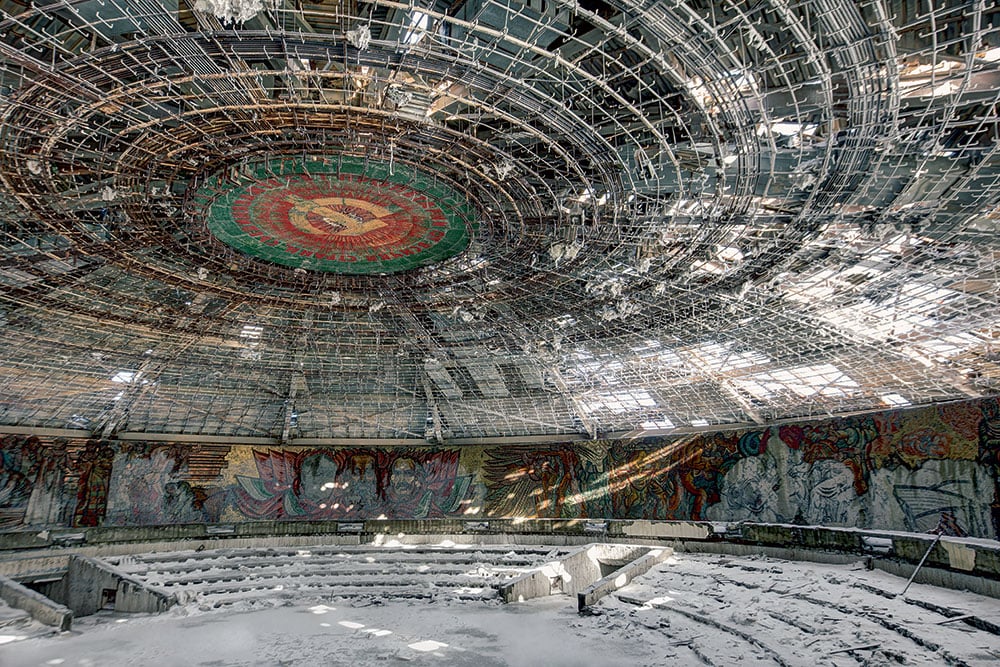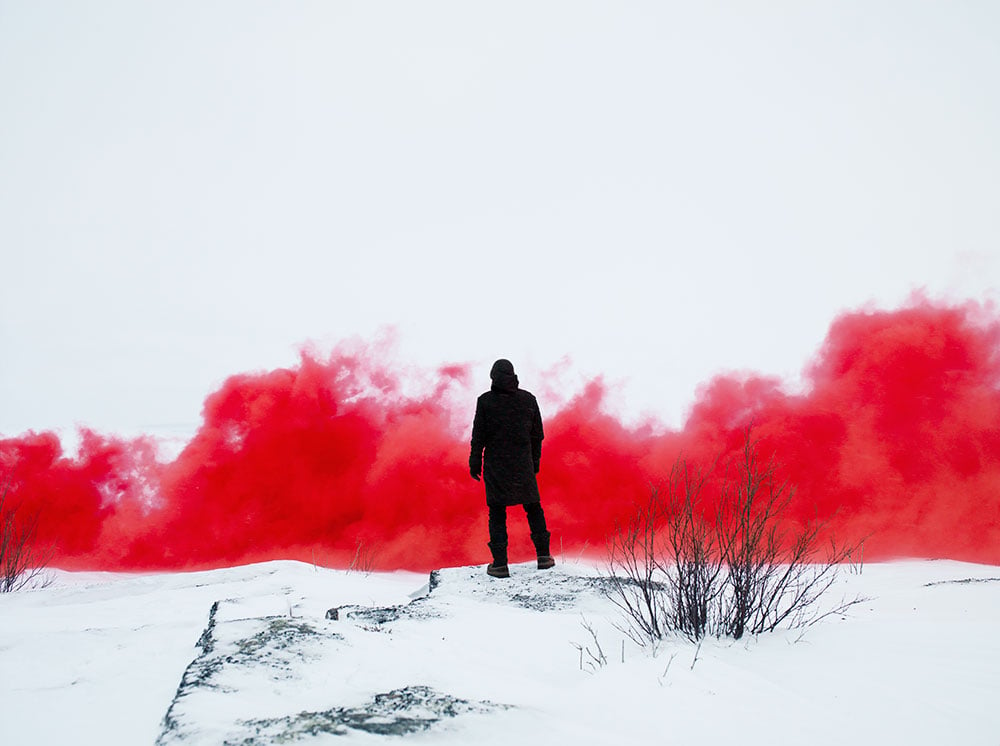City of disappearances: how do you conserve buildings in a Moscow turning its back on the past?
In the space of six months in the winter of 2003-04, three central Moscow landmarks were destroyed. First, the Military Store building, an Art Nouveau block designed by Sergei Zalesskii in 1912, was torn down in October 2003. Aleksei Shchusev’s monumental Hotel Moskva, which opened in 1935, followed suit a few months later. Then, on 14 March 2004, a fire ravaged the roof of the Manezh, a former stables-turned-exhibition space that had stood adjacent to Red Square since 1817. It was, in the words of Clem Cecil, a “crescendo of destruction”, and proved the catalyst for a remarkable campaign dedicated to conserving Moscow’s architectural heritage.
Cecil was Moscow correspondent for The Times from 2001 until 2004, when along with two other expatriate journalists — Kevin O’Flynn of the Moscow Times and freelance writer Guy Archer — she founded the Moscow Architecture Preservation Society (MAPS). Over the next eight years, she played a leading role in the group as they worked to counter the seemingly endless succession of demolitions and reconstructions carried out at the behest of the capital’s then-mayor, Yury Luzhkov.
At first, she admits, the fledgling group was flying blind. “We didn’t really know what we were doing; it was a reaction to something that was already happening,” she tells me from her office in London’s Pushkin House, the Russian cultural centre where she was recently made director. The Manezh fire had been “really the last straw”, emboldening the three foreign reporters to reach out to the great and the good of Moscow architecture and conservation. Influential figures including the then-chief architect of the Kremlin were all early supporters.
Cecil stresses that MAPS was one part of a broader shift towards activism in the capital — a conservation movement that had developed during the Soviet period was desperate for action, and the founding of MAPS coincided with protests by a Russian group called Moskva, Kotoroi Net (The Moscow That Isn’t There).
“The power that the authorities had to reconfigure the streetscape and therefore people’s sense of space seemed to me very wrong”
In 2007 MAPS issued their first report, Moscow Heritage at Crisis Point. “It was a bombshell,” Cecil says. The report was front page news in local and national newspapers. Its detailed registry of buildings under threat provided a targeted response to the municipal authorities’ key weapon: unaccountability. “They had been operating underneath the radar,” Cecil says. “They were very non-transparent. You couldn’t get a list of listed buildings; it was all a closed process with no opportunity for public engagement. They had total control of public space and worked closely with the mayor. The whole point of the campaign was to break that.”
In effect, MAPS was an actor in an information war that encompassed both Russian media and conservationists. “Part of the impact of the report was that the appetite for this story in the press grew. Here there’s a massive conservation movement, it’s been here since 1877. In Russia something would take root and then there’d be a revolution, a war, a change in government policy, and they’d have to start all over again. We were part of that wave of starting over again. We gave confidence to the burgeoning conservation scene.” The effect of their intervention was palpable. Arkhnadzor (Architecture Monitor), a civic movement that grew out a website founded in 2007, stood for local elections and now has seats on some city committees and has opened a heritage school (“That’s something we don’t even have,” Cecil notes. “When Russians do something properly, they really do it”); transparency in decision-making has increased, if nothing else, and the original 2007 report triggered the replacement of the director of the City Heritage Committee. Further reports followed, on Samara in 2009 and St Petersburg in 2012.
The work of MAPS and other conservation groups like Moskva, Kotoroi Net and Arkhnadzor is often painstaking and frustrating — dealing with intransigent administrators, exploring registries, reconstructing lost architectural histories — but motivated by concerns personal and political, aesthetic and practical. Cecil cites the demolition of her apartment building near the Old Arbat as one of the events that helped her grasp the scale and urgency of architectural preservation for Moscow. “I had got to know other people there and saw how traumatised they were by having to move, having no choice, how the community was being broken up. It was disturbing to see. But it was also seeing how the city was being played with. The power that the authorities had to reconfigure the streetscape and therefore people’s sense of space seemed to me very wrong. The individual’s sense of their space, their tiny space — and we only really know a tiny part of the city we live in — was being taken away from them. That’s denying someone something so fundamental: when you live in a city, you need that continuity.”
“There are so many layers of it in Moscow. But that’s no reason not to keep re-evaluating the significance of all the different periods and considering what’s valuable in each generation”
Yury Luzhkov, Moscow mayor from 1992 to 2010 was the man held responsible for the astonishing rate of demolition, expansion and reconstruction in the city during the period. Luzhkov was notorious in his disregard for the historical significance of buildings selected for removal, his cronyism and the widely panned crudity of his taste. “One thing I can say confidently about Luzhkov is that he’s a man of excesses,” Cecil says. “He doesn’t do things with care. He’s a builder, he likes money, he’s brash, he’s vulgar, he’s bold. We know this about mayors: they love leaving their mark, and the bigger and more phallic the better.”
Alongside his favourite sculptor, the almost equally infamous Zurab Tsereteli, Luzhkov set about a citywide project of what MAPS labelled “sham replica”. “His building style was pastiche: he would demolish whole streets of listed buildings and replace them with copies, which were nearly always double the size and in modern building materials. He saw everything in terms of some terrible suburban dacha that you want to keep building extensions and turrets on to.”
Luzhkov was eventually removed from office by then-President Dmitrii Medvedev in 2010, his waning popularity and propensity to run Moscow as a personal fiefdom proving unpalatable to the Kremlin. His successor, Sergei Sobyanin, oversaw what Cecil calls a “demolition amnesty” that lasted for around a year. “Improvements” have now recommenced, says Cecil.
I ask Cecil how the conservationist impulse is squared with the fact that all cities are subject to constant, often violent change: the modernist works we now marvel at, after all, were also built at a time when Moscow was being ripped up and reimagined. “It’s a political showcase city that’s remoulded all the time,” she replies. “There are so many layers of it in Moscow. The turn of the century multi-storey buildings that subjugated the rest of the city; then all the destruction of the 30s, Constructivist buildings swallowed and hidden by what Stalin built; then Khrushchev and his random insertions of modern buildings; then Brezhnev and his massive set pieces with huge landscaped areas around them. But that’s no reason not to keep re-evaluating the significance of all the different periods and considering what’s valuable in each generation.”
Text: Samuel Goff
Image: Natalia Melikova

